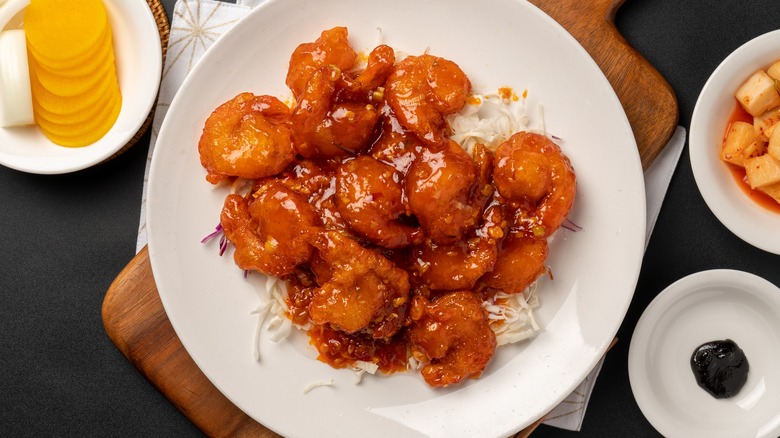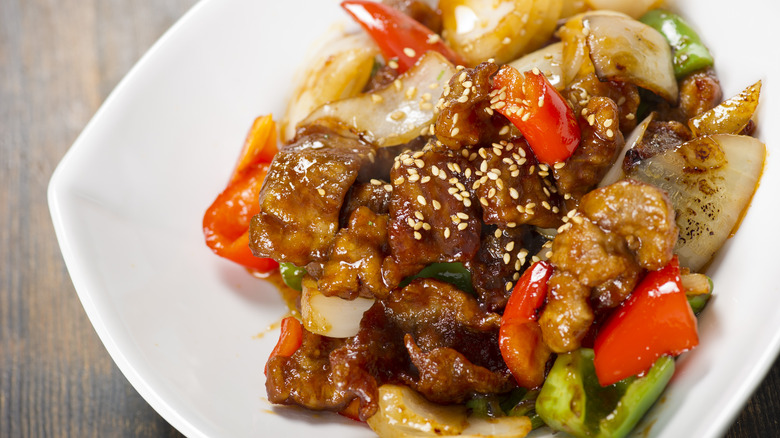The Absolute Best Cut Of Meat For Sweet And Sour Pork
When Chinese restaurants divulge their culinary secrets, we always listen with bated breath. How do they get their fried rice to be so fluffy? And what cut of meat do they use to whip up such perfect sweet and sour pork? We tapped an expert to get the scoop on what type of pork restaurants use for the savory dish.
Sweet and sour pork is a popular takeout dish, and for good reason. The sauce on the meat strikes the perfect balance between its two flavor components, but the meat itself is out of this world. It's deliciously crisp, yet also tender and juicy. For Derek Chan, R&D Manager at Mamahuhu, there's only one cut of meat responsible for this. "We prefer to use pork shoulder because of its mixture of tender meat and fat," he says. Though the cut may be associated with recipes like smoked pulled pork, it's actually highly versatile.
It does have less fat than pork butt, which also comes from the pig's shoulder. However, pork shoulder still has enough to create succulent dishes. The cut also has a substantial amount of meat. Though it's initially tough, pork shoulder softens as it cooks, so you won't need to worry about any chewy pieces of sweet and sour pork. Texture aside, the meat has a naturally savory flavor that complements the sweet and sour sauce.
Does lean or fatty pork shoulder work best for sweet and sour pork?
Though pork shoulder isn't overtly lean or fatty, you can alter it slightly if you'd like. "It's always possible to ask your butcher for either a leaner or fattier cut of pork shoulder," Chan says. Pork shoulder often comes with a layer of fat; you can get it removed, but there will still be fat from the marbling that will make the sweet and sour pork tender. A layer of fat may help the pork have a crispy coating, but it has its downsides. Leaving it on there may just make each bite a little too fatty or greasy.
If you go with pork shoulder without that layer of fat that still has a decent amount of marbling, you can get crispy sweet and sour pork that's perfectly juicy. Although lean cuts of meat have a harder time getting softer, since pork shoulder tenderizes as it cooks, it shouldn't be a problem. Additionally, you can adapt the secret to ultra-tender, restaurant-style beef for your pork by massaging the pork shoulder with baking soda. Then, to give the sweet and sour pork the perfect crispy exterior, coat it in cornstarch before frying.

